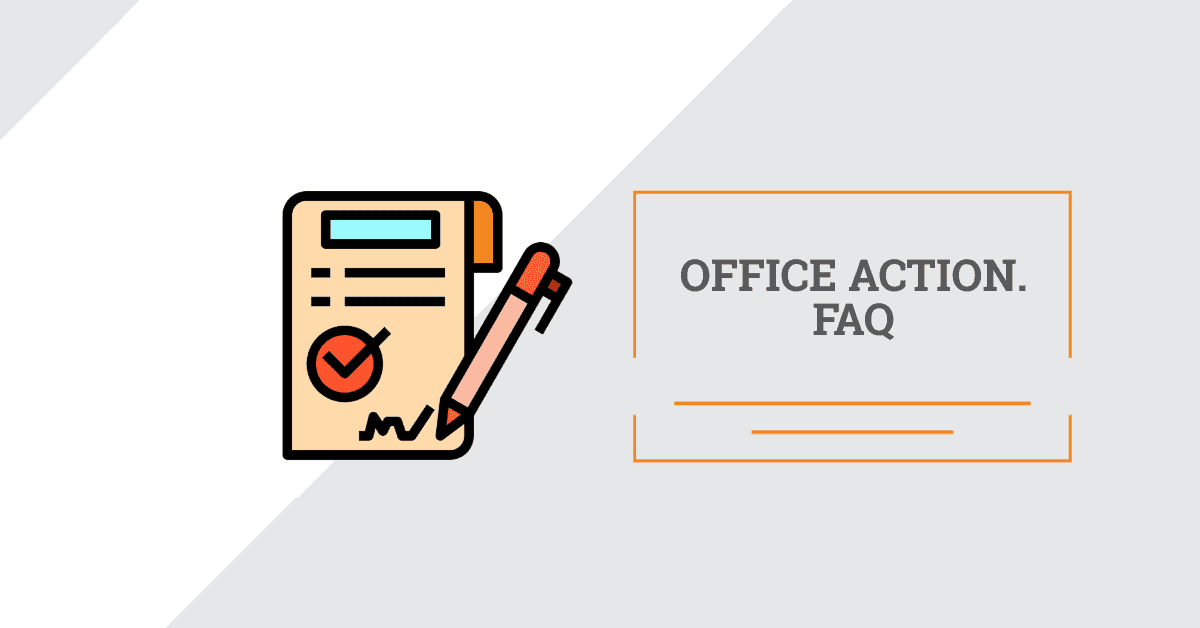
USPTO Office Action. FAQ.
Process of trademark registration in the USA takes time and requires a lot of efforts and attention while filling USPTO forms. Therefore, receiving letters from USPTO in the form of Office Action is more than just commonly known among trademark registration applicants as it is hard to follow all requirements of the USPTO.
What is Office Action?
In case an examining attorney decided that applicant hasn’t met filing requirements in the application, Office Action (an official letter) will be issued by the USPTO. The official letter includes an explanation which issues the application does contain. In order to finish the trademark registration process, it is obligatory to respond to this letter, otherwise, the application will be abandoned.
What is the difference between non-final and final Office Action?
Applicant might receive final and non-final Office Action. Non-final Action is sent to the applicant where some legal problems are raised because of non-compliance to filing requirements for the first time. In this letter examining attorney explains all legal issues appeared in the application and possible ways of its correcting. The response has to be submitted for six months from the mailing date. In case the applicant fails to correct all legal bugs which were met by an examining attorney of this application, USPTO will send you final Office Action. After succeeding to respond to this Action with meeting all needed requirements, the application will be moved further.
How to file a response to Office Action?
Applicant may use electronic system TEAS for filing a response not later than 6 months after its receiving. Note that applicant does not need to pay a processing fee when responding to the first Office Action. 100$ petition fee is required only after receiving Office Action for the second time.
Examining attorney describes all legal issues contained in the application with references to applicable law. Applicant should take into account all indicated remarks and provide the examining attorney with its response.
What does the abandoned application mean?
If applicant does not file a response to an Office Action within designated by USPTO time, the application is considered to be abandoned. It means that the application is not pending anymore and cannot proceed further for the registration process.
How to revive an abandoned application?
However, if applicant’s delay for a response was unintentional the possibility to fill a petition to revive the abandoned application exists. By doing so, the applicant has the following timeframes:
- two months after the issue date of the notice of abandonment;
- two months after the date of actual knowledge of the abandonment and not later than six months after the date the trademark electronic records system indicates that the application is abandoned is the applicant declares that it did not receive the notice of abandonment.
While filing the Petition to Revive Application Abandoned for Failure to Respond to an Office Action it shall include:
- (1) 100$ petition fee (there is no cost if the abandonment resulted from the USPTO error);
(2) A statement, signed by someone who knows that the delay in filing the response on or before the due date was unintentional;
(3) When the abandonment exists after a final Office action the applicant shall also file the following documentation insofar as the response is treated as a request for reconsideration:
(i) A notice of appeal to the Trademark Trial and Appeal Board or a petition to the Director; or
(ii) A statement that there is no filed appeal or petition from the final refusal(s) or requirement(s).
After taking above mentioned actions the abandoned application might be revived by the USPTO.
It should be also noted that according to the rule of trademark registration process effective as of August 3, 2019, foreign-domiciled shall be represented by the US-licensed attorney for filing trademark-related submissions with the USPTO. It means that responding to final or non-final Office Action requires having an appointed attorney who is licensed to practice law in the United States.
However, Legal IT Group has a close relationship with US patent attorneys who will be glad to help you with Office Action response. Use the filling form below and IT lawyers come to rescue!

